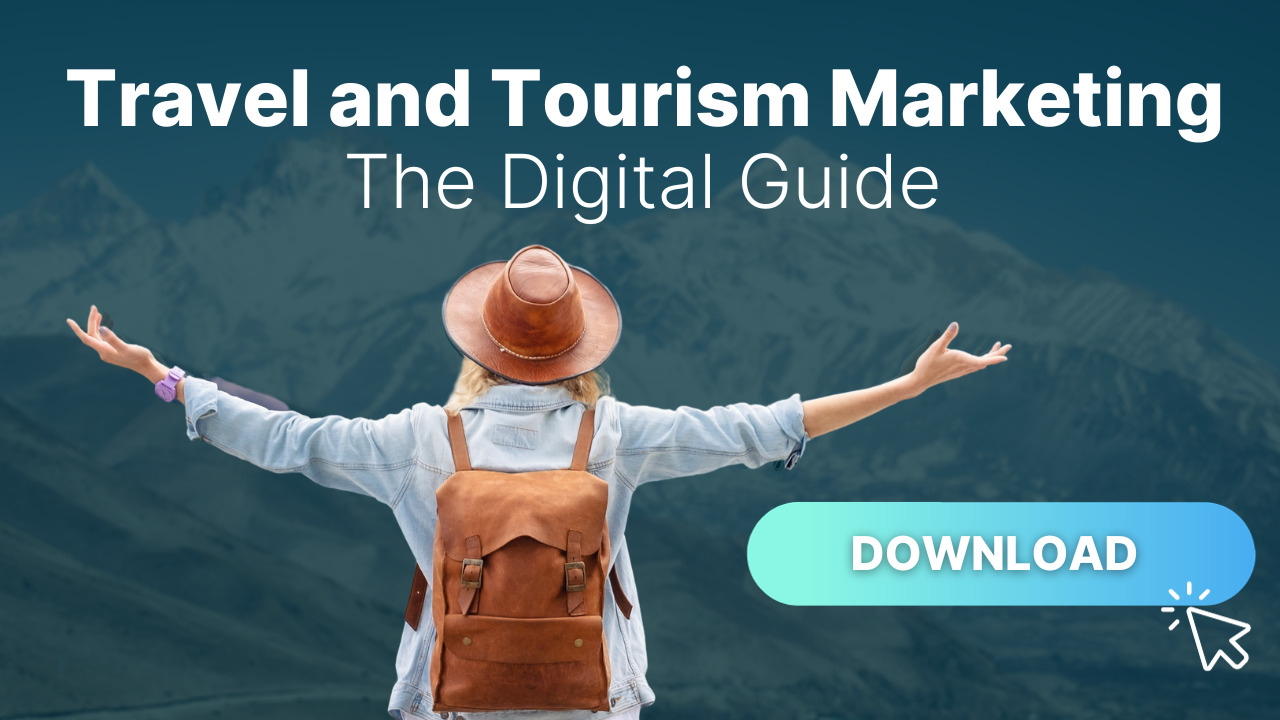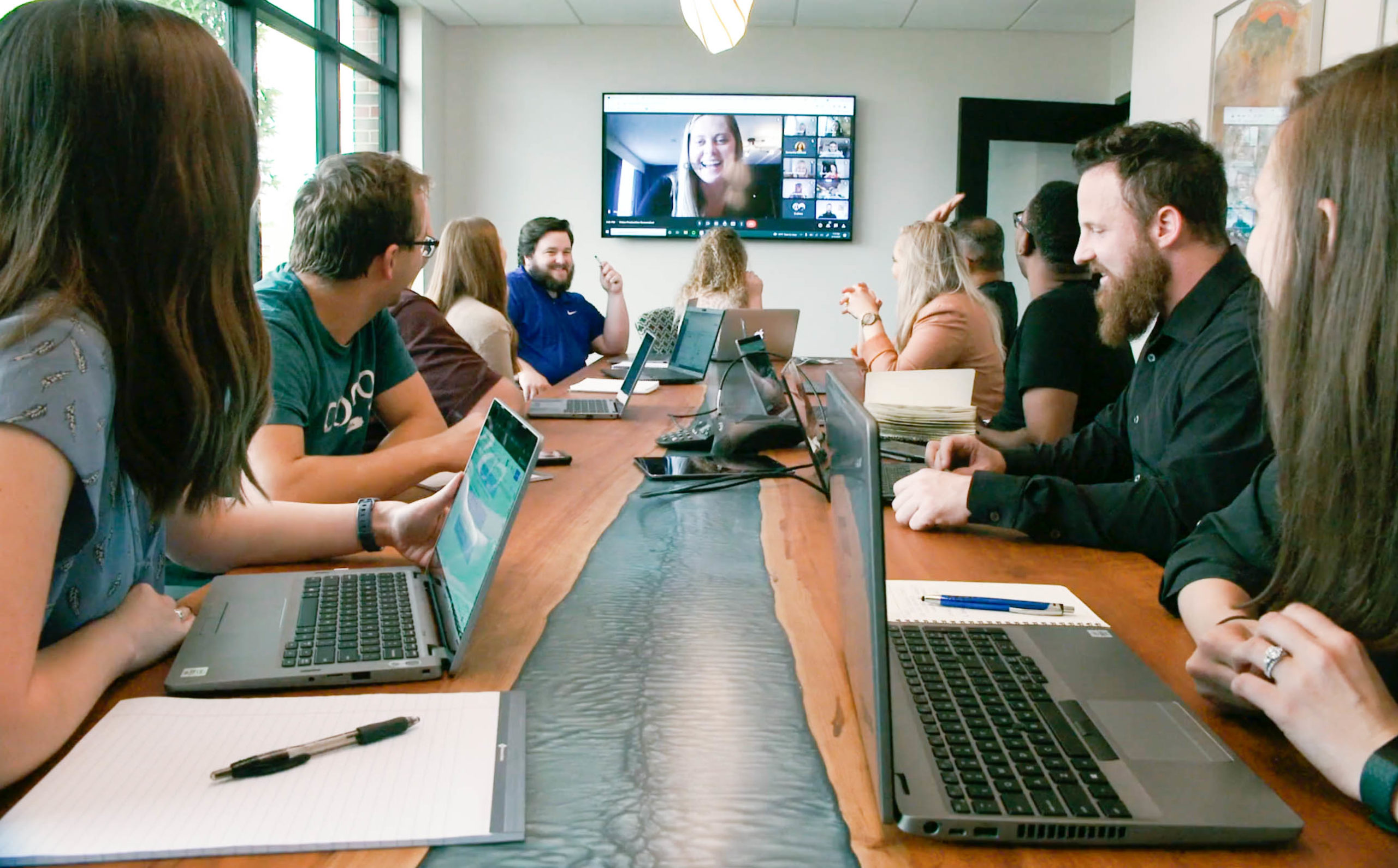The travel and tourism marketing is rebounding as the industry surges above pre-pandemic levels.
Are you taking advantage of it?
This digital guide to travel marketing gives you everything you need to know before launching a campaign.
How to Succeed at Travel and Tourism Marketing
Travel books and printed pamphlets are a thing of the past. Now, it’s time to lead with digital tactics.
Today’s travelers are finding inspiration for trips on digital channels. Younger travelers in particular are taking this a step further by shifting to mobile devices over desktop, looking to the brand’s website or Instagram to get a sense of what they can expect.
To reach the modern traveler, brands need to create a seamless experience across digital channels from awareness to check out/visit.
You’ll also need to create a strategic, customized approach to target your optimal audience on the most impactful channels.
Your Guide to Success
Download this guide to learn how to:
-
- Leverage the latest travel and tourism marketing trends
-
- Create the optimal media mix for your brand with the most impactful channels
-
- Implement cookieless solutions to reach your target audience
-
- Measure the ROI from omnichannel travel marketing campaigns
Ready to take off?
View and download the guide below!
The Return of Travel and Tourism Marketing
After the tumultuous years of the pandemic, travel and tourism is finally experiencing a surge in demand. Travel digital marketing spend dipped 51% in 2021 but is now growing by 14.2% in 2022. An additional 12.1% increase is expected in 2023, according to eMarketer.

What do travel and tourism marketers need to do to prepare for this opportunity?
Lead With Digital Tactics
Travel books and printed pamphlets are a thing of the past. Today’s travelers are finding inspiration for trips on digital channels. Younger travelers in particular are taking this a step further by shifting to mobile devices over desktop, looking to the brand’s website or Instagram to get a sense of what they can expect.
As the saying goes, “not all who wander are lost.” Allow yourself to experiment, becoming smarter by letting continuous learning guide your marketing strategy. The best way to do that is to start with digital, where flexibility and agility allow for quick learnings and pivots.
Digital marketing is the perfect petri dish to test out tactics and creatives before making a major investment. For example, you can run a short-form video ad on social media and identify which creative is performing best. Then, use those creative learnings to inform a more premium CTV placement or Cable TV buy with an added layer of confidence.
Is your travel brand ready for a digital-first marketing strategy?
Here’s your digital housekeeping checklist to prime your digital travel and tourism marketing for success:

High Impact Travel and Tourism Marketing Channels
When choosing travel marketing channels, consider these four aspects:
-
- Budget: If budget is limited, maximize spend on fewer channels. If you have more dollars, consider diversifying, testing something new or incorporating premium placements.
- Audience: Identify where your audience is most active and receptive to advertising.
- Customer Journey: Understand how your customers behave, and shape your advertising around their decision making process.
- Storytelling: Include highly visual channels that allow storytelling to tap into their emotions.
To keep pace with digital-first users, prioritize your digital marketing efforts on these key digital channels:
-
- According to Pathmatics data, Facebook is the leading social media channel for Travel/Tourism ad spend. Explore various ad formats to help lead your traveler down the funnel, such as Facebook Lead Ads. Tailor educational resources to unique audience groups to establish trust and consideration.
Endemic Travel Sites
User-Generated Content
-
- UGC is used by 58.2% of travelers for planning leisure travel. Word of mouth is, and always will be, the most impactful form of marketing. Encourage customers to leave quality reviews on your site or other travel pages to boost your brand status. In addition, encourage users to create content FOR you.
Paid Search
-
- Speed and agility are crucial for travel brands. You need to appear as a top option for during the research and discovery process. Optimize a combination of branded, unbranded and competitive paid search terms. This will help you show up for relevant, high value queries.
-
- Twitter is especially effective for targeting luxury and business travelers on a platform where users are highly engaged, especially surrounding news and business. To expand your targeting pool, use the platform’s AI to find follower lookalikes from competitor brands.
Online Video
-
- While a picture is worth a thousand words, a video is priceless. Online video placements across YouTube and Display allow brands to tell a rich, visual story. YouTube offers various travel category targeting options such as Business Travel, Family Travel, and Frequent Travel. You can also layer these with geo targeting to narrow in on your core audience.
Connected TV
-
- Connected TV amplifies online video by placing it on the largest screen in the household. It’s one of the most impactful visual mediums travel brands can use, while offering more flexibility and addressability than linear TV. CTV ads are a great option to reach family travelers or promote kid-friendly destinations.
Influencer
-
- 49% of Gen Z adults and 50% of Millennials follow at least one travel influencer on social media per a MorningConsult study. These online figures are beginning to play a pivotal role in how travel is planned. Explore how creators can help boost your brand affinity whether it be local nano-influencers or macro-influencers.
-
- Instagram is a go-to source of inspiration for Millennial and Gen-Z travelers. Travel brands can build community by interacting with users through various formats – reels, stories, and posts. Use post comments, story polls, and Q&As to start a conversation with interested travelers. Avoid being overly curated and don’t be afraid to use trending phrases, sounds or hashtags.
-
- Travel engagement on Pinterest is at an all time high with travel-related searches increasing by over 60%. Pinterest is primed for planning and purchasing, and can facilitate real bookings. This platform is a great place to hone in on ‘Travel’ and ‘Foodie’ audiences.
TikTok
-
- No other social platform enables the potential virality or mass reach as TikTok. Users spend an average of 52 minutes per day on the app, and 90% of TikTok users use the app multiple times daily. Although TikTok has a strong younger presence, 51% of users are now 30+. The app is growing in popularity amongst millennials with disposable income for travel. DisneyParks has over 4M followers on TikTok and Delta Airlines gained nearly 19.5M views in the initial 36 hours of their first TikTok campaign.
Retail Media
-
- Activating first-party shopper audiences through retail media networks is a great way to reach travelers. For example, the Marriott Media Network uses search and reservation data to serve relevant ads to consumers.
DOOH
-
- Digital out of home spend is soaring as people are traveling again. Screens in airports, inflight video, taxi cabs, bus stations, billboards near attractions, and more can place your brand in front of traveling audiences. DOOH is a great tactic to educate users once they are at a destination.
Local Partnerships
-
- 78% of survey respondents want to support local small businesses when they travel. State and city tourism brands can leverage this trend by partnering with local artists, chefs or businesses. Thise partnerships can drive travel consideration and boost awareness for both parties. Consider unique creative options like how-to videos, downloadable guides, or co-branded social posts about the partnership.
Ad Targeting for Travel and Tourism Audiences
It’s important that you don’t create a one-size-fits-all approach when marketing to future tourists. Consider who your existing traveler base is, and identify attributes to qualify other individuals in your prospecting audience. From there, tailor messaging to drive education and consideration.
Are they solo travelers seeking adventure? Young families looking for a cost effective, kid-friendly trip? Foodies wanting luxurious and avant garde dining experiences? Create profiles to understand these individuals from a 360-degree perspective. Build as many personas as makes sense for your brand.
Personalize Messaging
Next, personalize your messaging to meet their unique motivations, behaviors and interests. Speak to each group differently and adjust visuals to resonate with their interests. If you’re looking to reach the adventure seeker, show fun activities like zip lining, hiking, concerts, etc. If you’re speaking to the budget-friendly family, showcase the value of the experiences you offer, without a major bill.
Reach Your Travelers Throughout Their Journey
To reach today’s consumers, brands need to create a seamless experience across digital channels from awareness to check out/visit.
An omnichannel strategy is vital to keep a loyalty loop and encompass all phases of the customer journey. Use your marketing mix to show up at key moments in the consumer journey from planning to experiencing. ThinkWithGoogle identified four core micro-moments in the travel process: Dream, Plan, Book, and Experience.
-
- Dream – Spark inspiration and educate during the dreaming phase
-
- Plan – Provide helpful information and build trust
-
- Book – Offer a compelling value proposition and enable seamless transaction
-
- Experience – Ensure the visit is positive and meets expectations. Follow up with post-visit marketing to keep customers engaged. Encourage reviews and social media posts during and after.
Measuring Travel and Tourism Marketing Campaigns
Create a Data Terminal
It’s easy to get absorbed in the performance of individual channels. However, this causes campaigns to quickly turn from strategic to tactical. Instead, manage your advertising holistically within one dashboard. Doing so allows you to share and optimize performance trends and learnings across tactics. By looking at the data from a macro lens, you can identify important signals and weave a cohesive story.
Check your unnecessary baggage
Marketers need to ensure they are looking beyond vanity metrics to identify trends that signal success. It is especially important to synchronize data sets as we prepare for cookie deprecation. Instead of solely looking for direct attribution, explore a variety of business and media metrics over time. This will unveil unique learnings and better show the incremental impact of advertising.
Onboard advanced measurement
When media metrics do not answer your business questions, layer advanced measurement tactics, on top of traditional media efficiency metrics. These data points will provide a more robust view of marketing’s impact on business goals.

For tourism brands, foot traffic lift is especially impactful in providing a clear view of how advertising drove incremental increases in visitors.
Refuel with continuous learning
When creating a marketing strategy, it’s critical to fuel ongoing campaign learnings to answer key questions and improve results for future initiatives.
At Coegi, we combine a measurement strategy and a structured learning agenda. This ensures we are optimizing campaigns toward business goals while also continuously improving.
Key Takeaways for Travel and Tourism Marketers
- Lead with digital tactics to reach the growing audience of travelers
- Lean into highly visual channels such as social media and online video
- Understand your unique audiences and tailor ads to their consumer journey across channels
- Implement a comprehensive measurement strategy to see the impact of your campaigns
For more strategic insights and campaign activation, contact Coegi to set up a meeting with our travel marketing experts.







